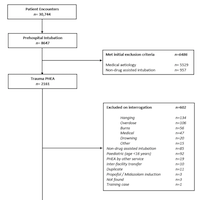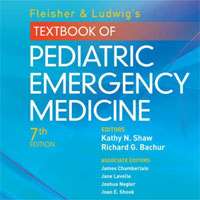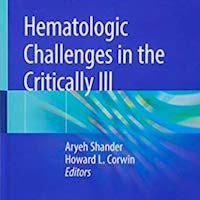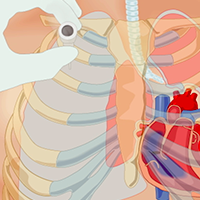Tag: trauma

Traumatic Major Hemorrhage in a Tertiary Trauma Center
Major traumatic hemorrhage is potentially preventable with rapid hemorrhage control and improved resuscitation techniques. The time from injury to hospital, resuscitation, diagnosis, and definitive bleeding control should... read more

Critical Hypertension in Trauma Patients Following Prehospital Emergency Anesthesia
Delivery of prehospital emergency anesthesia (PHEA) to seriously injured trauma patients risks hemodynamic fluctuation. In adult trauma patients undergoing PHEA, 11.9% of patients experienced post-PHEA critical hypertension.... read more

ICU Protocols: A Step-wise Approach, Vol II
The second edition of this highly successful book includes up-to-date notes on the step-wise management of clinical emergencies encountered in everyday intensive care units (ICU). Each thoroughly revised chapter provides... read more

Damage Control Resuscitation: Identification and Treatment of Life-Threatening Hemorrhage
This book provides a comprehensive overview of damage control resuscitation (DCR), an evidence-based approach to the resuscitation of patients with severe life-threatening hemorrhage (LTH). It focuses on both civilian... read more

Handbook of Critical and Intensive Care Medicine
The latest edition of this handbook is a concise yet comprehensive guide for attending physicians, fellows, residents, and students who cover the ICU. The chapters follow an outline format and are divided by organ system,... read more

Fleisher & Ludwig’s Textbook of Pediatric Emergency Medicine
Fleisher & Ludwig's Textbook of Pediatric Emergency Medicine has long been acknowledged as the indispensable comprehensive clinical reference on diagnosing and managing emergent health issues in children. Now, a new editorial... read more

Hematologic Challenges in the Critically Ill
This volume provides a comprehensive overview of hematologic issues that clinicians regularly encounter in the critical care environment. The text features hematologic scenarios that affect the adult ICU patient, outlines... read more

PTSD, Workplace Trauma Lower Among First-Year Residents During COVID-19
Contrary to popular belief, rates of post-traumatic stress disorder (PTSD) and workplace trauma exposure was lower among first-year medical residents during the COVID-19 pandemic than in years prior, according to new research.1 In... read more

Artesunate Treatment in Severely Injured Patients with Traumatic Hemorrhage
In this study of critically injured trauma patients with major hemorrhage, artesunate did not improve organ dysfunction and was potentially associated with an increased VTE risk. Future studies that focus on immune responses... read more

Biomarkers in Trauma, Injury and Critical Care (Biomarkers in Disease: Methods, Discoveries and Applications)
This handbook systematically presents biomarkers for traumatic injuries. The book covers topics such as traumatic brain injury, liver injury, burn severity, muscle heart damage, and acute inflammation in polytrauma and their... read more

Traumatic Hemorrhage and Chain of Survival
Trauma is the number one cause of death among Americans between the ages of 1 and 46 years, costing more than $670 billion a year. Following death related to central nervous system injury, hemorrhage accounts for the majority... read more

Acute Traumatic Coma Awakening by Right Median Nerve Electrical Stimulation
Severe traumatic brain injury (TBI) leads to acute coma and may result in prolonged disorder of consciousness (pDOC). We aimed to determine whether right median nerve electrical stimulation is a safe and effective treatment... read more

Intubating the Critically Ill Patient: A Step-by-Step Guide for Success in the ED and ICU
Intubating critically ill patients is a process that requires a well-thought-out, step-by-step plan, specific to each patient. This book teaches the steps necessary to predict, prepare, perform, and provide pre and post-intubation... read more

Tube Thoracostomy in Emergency Department
Using trauma video review we identified significant procedural variability in emergency department tube thoracostomy, mainly that hemodynamic abnormality led to lower proficiency scores and increased malpositioning. Efforts... read more




